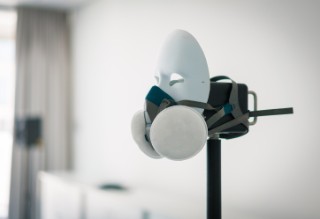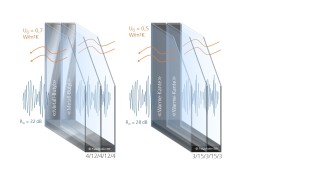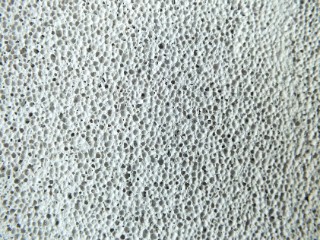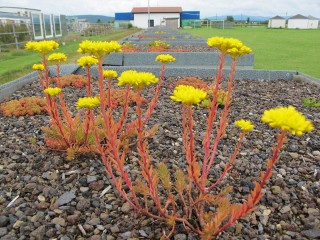In the Digital Room Acoustics Planning (DIGAKUST) project, a software solution is being developed that automatically calculates relevant key acoustic figures and makes them audible in a simulation environment in real time by transferring technical room parameters (e.g. size of the room, position of objects in the room, material properties of the surfaces). The aim is to provide users with an easy-to-use tool that captures interiors in great detail, automatically assigns object properties, allows the geometry of the room to be individually configured via an intuitive user interface, and makes it possible to experience the resulting changes in room acoustics in real time. Thus, the impact of structural or design changes on the overall acoustics becomes immediately apparent.
more infoProjects and References
-
-
In the “Bassorber” project, a comprehensive calculation tool developed at IBP is used to accelerate and optimize the development of absorbers. The tool not only allows the absorption coefficients of almost all absorber structures to be optimized, but also the interaction between the absorbers.
more info -

Test setup in the HiPIE laboratory in Stuttgart.
The HiPIE laboratory enables the conditioning of the environmental conditions acoustics, lighting, room climate and air quality on a room area of approx. 45 sqm.
more info -
Did you know? Face masks impair speech intelligibility
Highlights from research and development

Mask in the experimental setup.
An interdisciplinary team from the Department of Acoustics has studied the effects of masks on speech comprehension and on the quality of communication.
more info -

Comparison of the thermal insulation and sound insulation properties of thermal glazing.
Although modern thermal glazing reduces a building’s energy requirements, it also has an impact on sound insulation.
more info -

Quanderland acts as an enabler of photonic and quantum technology solutions for sustainability challenges.
The project combines innovation, technology, and sustainability in a unique research network, designed to make quantum technologies tangible, application-oriented, and future-proof. In addition to fostering new cooperation formats for idea development and rapid prototyping, the project emphasizes the robust investigation of ecological, social, and economic aspects of the applications, as well as the added value that these technologies can deliver. Fraunhofer IBP plays a central role in evaluating the potential of the investigated approaches and supports all joint projects in this funding program with expertise in life cycle assessment and sustainability evaluation.
more info -

Noise transmission from building services in timber and lightweight construction.
With the growing importance of sustainable construction and increasing demands for comfort and efficiency, timber and lightweight buildings are becoming more prevalent. However, these construction types pose specific challenges in terms of noise transmission from technical building systems. To address this issue, the Fraunhofer IBP is developing the “PreNoise Wood” research project - a groundbreaking method for predicting and reducing installation noise in resource-efficient buildings. Based on the successful outcomes of the “ProSa” project for solid construction, “PreNoise Wood” adapts and extends those methods specifically for timber and lightweight structures. The goal is to create scientifically sound and practically applicable solutions, especially for small and medium-sized enterprises (SMEs), enabling early-stage acoustic optimization of building components and technical systems, and providing reliable planning tools for noise prediction - a clear benefit for building owners, manufacturers, and planners.
more info -

In line with Germany's sustainability strategy and in support of the global Sustainable Development Goals (SDGs), the Fraunhofer Institute for Building Physics IBP has launched the joint project “AACtion,” dedicated to the development of environmentally friendly building materials. Facing the challenges of increasing global urbanization pressures, the project aims to significantly enhance resource efficiency and reduce the carbon footprint in the construction industry.
more info -

Sleep disorders have become a widespread public health issue – over 40% of the German population report problems falling or staying asleep. While health, nutrition, and physical activity are central topics in preventive research, the impact of the sleep environment is still frequently overlooked. Yet factors such as indoor climate, acoustics, light, and air quality are crucial for restorative sleep. This is precisely where our project comes in: At the Fraunhofer Institute for Building Physics IBP, we are developing innovative, digital, and building physics solutions designed to measurably improve sleep quality – both in private homes and in hotels, clinics, and care facilities. Our goal is to promote a new understanding of healthy sleep through intelligently designed rooms. Companies in construction, technology, hotel, and healthcare directly benefit from practice-oriented concepts, new services, and sound scientific expertise.
more info -

Natural weathering with flowers
Green roofs improve the living quality in urban spaces. But how does the release of mecoprop from polymer-modified bitumen membranes impact the environment?
more info